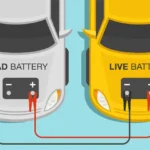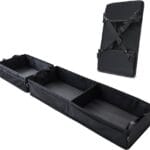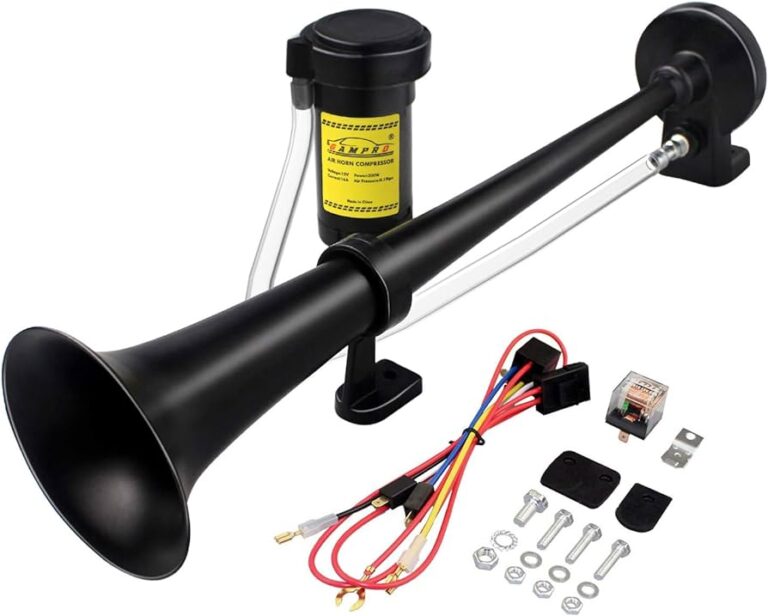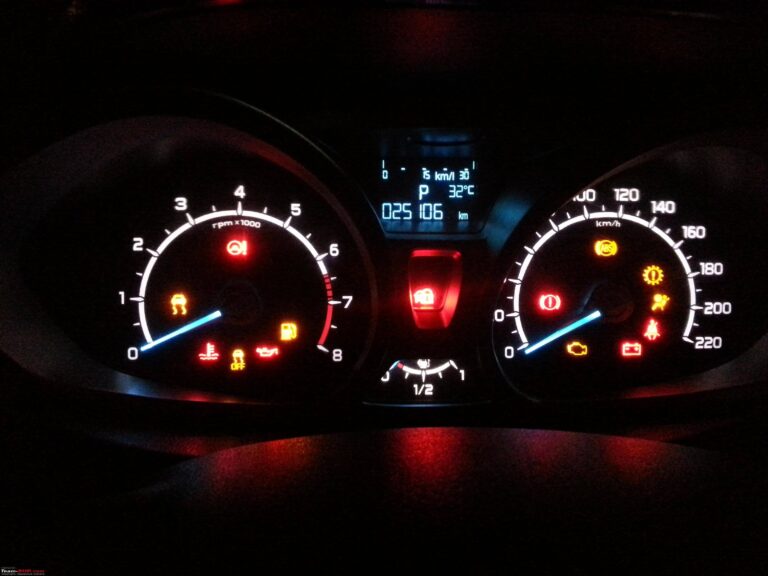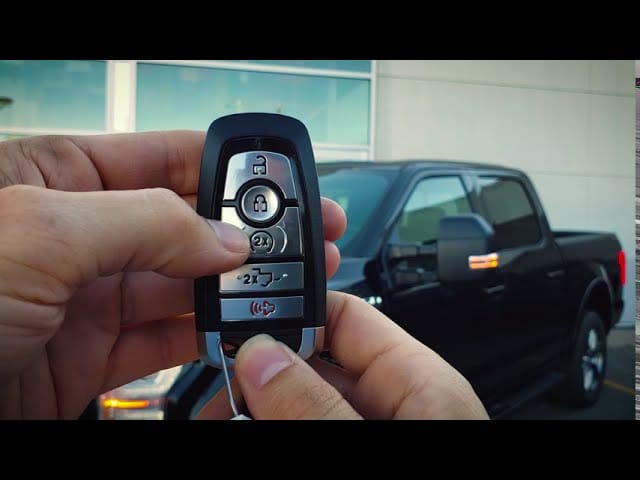How Many Gallons Does an F150 Hold? Unveiling the Fuel Tank Capacity
An F150 can hold up to 23 gallons of fuel. The Ford F150, a popular pickup truck, is known for its durability and power.
One key aspect of this vehicle is its fuel capacity, which determines its range and how often you’ll need to refuel. For those considering purchasing an F150 or simply curious about its capabilities, it’s important to know how many gallons of fuel it can hold.
By understanding its fuel capacity, you can plan your trips accordingly and have a better idea of how far you can go before needing to fill up. We will provide you with the exact number of gallons an F150 can hold, giving you a clearer picture of this truck’s fuel efficiency.

Credit: www.edmunds.com
Fuel Tank Capacity Of An F150
If you’ve ever wondered about the fuel tank capacity of an F150, you’re not alone. It’s common for truck owners to want to know exactly how many gallons their vehicle can hold. Whether you use your F150 for work or play, knowing the fuel tank capacity can help you plan your trips and ensure you don’t run out of gas in the middle of nowhere. In this article, we’ll dive into the details of the fuel tank capacity of an F150.
Overview
The fuel tank capacity of an F150 can vary depending on the model and year. However, most F150 trucks have a fuel tank capacity of around 23 to 36 gallons. This generous capacity allows for extended trips without frequent fuel stops, making the F150 an excellent choice for long-haul drives or camping adventures.
Determining Factors
Several factors contribute to the fuel tank capacity of an F150. Understanding these factors can help you determine the exact capacity of your specific truck. Here are some essential factors to consider:
- Model and Year: Different F150 models and years may have slightly different fuel tank capacities. It’s essential to consult your vehicle’s manual or check with the manufacturer for accurate information.
- Trim Level: Higher trim levels of the F150 often come with larger fuel tanks as they are designed for more extended journeys and heavy-duty use.
- Bed Length: The length of your truck’s bed can affect the fuel tank capacity. In some cases, trucks with longer beds may have larger fuel tanks to accommodate for the extra weight and load capacity.
- Engine Type: The type of engine your F150 has can also impact the fuel tank capacity. Some engines have higher fuel efficiency, allowing for more extended driving ranges.
By considering these determining factors, you can get a better understanding of the fuel tank capacity of your specific F150 truck.
In conclusion, the fuel tank capacity of an F150 can range from approximately 23 to 36 gallons, depending on various factors such as model, year, trim level, bed length, and engine type. Knowing your truck’s fuel tank capacity will help you plan your trips better and ensure you have enough fuel for your adventures.

Credit: www.edmunds.com
Standard Fuel Tank Sizes
The F150 has a fuel tank capacity of 23 gallons, allowing for long trips without frequent stops for refueling. This standard size ensures ample fuel storage for the truck’s efficient performance.
Factory-installed Tanks
When it comes to the standard fuel tank sizes of the F150, the factory-installed tanks vary depending on the model and trim level. The most common size for factory-installed tanks in the F150 is the 23-gallon option, which is known for its balance of fuel capacity and weight. This size allows drivers to go longer distances without the need for frequent fuel stops, especially during long road trips or off-road adventures.
Aftermarket Options
While the factory-installed tank sizes are designed to meet the needs of most F150 owners, many drivers opt for aftermarket options to increase their vehicle’s fuel capacity. Aftermarket fuel tanks provide the advantage of allowing drivers to carry more fuel without sacrificing cargo space or adding unnecessary weight to the vehicle. With aftermarket options, F150 owners can choose larger fuel tanks with capacities up to 26 gallons or more, depending on their specific requirements.
How To Find The Fuel Tank Size?
If you are wondering about the fuel tank size of your F150, you’re in the right place. Knowing the exact number of gallons your F150 can hold is crucial, especially if you are planning for long trips or considering modifications to increase fuel capacity. In this section, we will explore three different methods to find the fuel tank size: consulting the owner’s manual, referring to the manufacturer’s website, and accessing online forums like the Community of Ford Truck Fans.
Owner’s Manual
The owner’s manual is a valuable resource that often contains detailed information about your vehicle’s specifications, including the fuel tank size. If you have a hard copy of the manual, you can easily find the section that covers all the details about your F150, including its fuel tank. Typically, the fuel tank size will be listed in either the “Specifications” or “Technical Data” section.
If you don’t have a physical copy of the owner’s manual, don’t worry! Many vehicle manufacturers provide digital versions of manuals on their websites. You can visit the official website of Ford and look for the “Owner’s Manuals” section. Once there, you can search for your specific F150 model and year to access the digital version of the manual. A quick search within the manual using keywords like “fuel tank” or “fuel capacity” should lead you to the relevant information.
Manufacturer’s Website
The manufacturer’s website is another reliable source of information when it comes to finding the fuel tank size of your F150. Ford, being the manufacturer of the F150, provides detailed specifications on their website for all their vehicles. Simply visit the official Ford website and navigate to the “Vehicles” or “Trucks & SUVs” section, then select the F150 model and year that you are interested in.
Scroll through the page until you find the specifications for the F150. Look for a subsection that provides details about the fuel system, which will include the fuel tank size. Alternatively, you can use the search function on the website and enter keywords like “fuel tank size” or “fuel capacity” to quickly locate the information you need.
Online Forums – Community Of Ford Truck Fans
The Community of Ford Truck Fans, a popular online forum dedicated to Ford truck enthusiasts, can be a valuable resource to find information about the fuel tank size of your F150. Many F150 owners discuss their experiences and share useful knowledge on these forums.
You can visit the Community of Ford Truck Fans website and use the search function to look for threads related to fuel tank size. Alternatively, you can create a new post or thread asking about the fuel tank size of your specific F150 model. The community members are typically helpful and will share their insights and experiences.
Implications Of Fuel Tank Capacity
The Ford F150 has a fuel tank capacity of 23 gallons, allowing for extended driving range and fewer stops at the gas station. This larger tank size offers convenience and efficiency for F150 owners.
Driving Range
The fuel tank capacity of an F150 plays a significant role in determining the driving range of the vehicle. With a larger fuel tank capacity, you can travel longer distances without having to refuel. Let’s take a closer look at how the fuel tank capacity affects the driving range of an F150.
Typically, the Ford F150 comes with different fuel tank options, including 23-gallon, 26-gallon, and even larger capacity tanks. Let’s assume we are considering an F150 with a 26-gallon fuel tank capacity.
(Table) Below is a breakdown of the estimated driving range for an F150 with a 26-gallon fuel tank capacity, based on different fuel efficiency levels:
| Fuel Efficiency (MPG) | Driving Range (Miles) |
|---|---|
| 10 | 260 |
| 15 | 390 |
| 20 | 520 |
| 25 | 650 |
(Unordered List) Therefore, with a fuel efficiency of 20 MPG, an F150 with a 26-gallon fuel tank capacity can travel up to 520 miles without refueling. It’s important to consider your driving habits and the fuel efficiency of your vehicle when estimating the driving range.
Refueling Frequency
The fuel tank capacity also affects how frequently you need to refuel your F150. With a larger fuel tank capacity, you can go longer periods without needing to stop at a gas station. Let’s explore how the fuel tank capacity impacts refueling frequency.
Assuming you are driving an F150 with a 26-gallon fuel tank capacity and your average driving range is around 400 miles, you may need to refuel every:
- 8 days if your daily mileage is around 50 miles.
- 4 days if your daily mileage is around 100 miles.
- 2 days if your daily mileage is around 200 miles.
These estimates give you an idea of how frequently you may need to refuel depending on your driving habits and the fuel tank capacity of your F150. It’s always a good idea to plan your refueling stops ahead of time, especially for longer road trips.
Factors Affecting Fuel Efficiency
When it comes to fuel efficiency, it’s crucial to consider the various factors that can impact the mileage of your F150. By understanding these factors, you can make informed decisions to maximize your truck’s fuel economy and minimize your trips to the gas station.
Engine Type
One of the primary factors that affect fuel efficiency in an F150 is the type of engine it has. The F150 offers different engine options, including V6 and V8 engines. Generally, V6 engines tend to be more fuel-efficient than V8 engines as they have smaller displacements and fewer cylinders. This means that V6 engines require less fuel to generate power, resulting in better fuel economy.
Driving Conditions
The driving conditions you encounter can have a significant impact on your F150’s fuel efficiency. Factors such as traffic congestion, road conditions, and driving speed can affect how many miles you can drive on a gallon of fuel. Congested city roads and stop-and-go traffic can lead to increased fuel consumption due to frequent acceleration and deceleration. On the other hand, highway driving at a constant speed can contribute to better fuel economy.
Driving at higher speeds typically results in decreased fuel efficiency as the aerodynamic drag on the vehicle increases. This means that driving at a steady pace within the recommended speed limit can help improve your F150’s fuel economy.
Additionally, driving with excessive cargo or towing heavy loads can also impact fuel efficiency. The extra weight and increased resistance can cause the engine to work harder, using up more fuel in the process. Therefore, it is essential to consider the weight you are carrying and avoid unnecessary items or excessive cargo when possible.
In conclusion, factors such as engine type and driving conditions play a crucial role in determining the fuel efficiency of your F150. By paying attention to these factors and adopting fuel-efficient driving habits, you can optimize your truck’s mileage and enjoy more miles per gallon.

Credit: www.facebook.com
Frequently Asked Questions On How Many Gallons Does An F150 Hold
How Many Gallons Is A Ford F150 Fuel Tank?
The fuel tank size of a Ford F150 is 23 gallons.
How Big Is 2023 F-150 Fuel Tank?
The 2023 F-150 has a fuel tank capacity of 23 gallons.
How Many Gallons Of Gas Does A 2016 F-150 Hold?
The 2016 F-150 has a gas tank capacity of 23 gallons.
How Much Does A Ford F150 Get To The Gallon?
The Ford F150 gets approximately 20 MPG.
Conclusion
After discussing the different factors that determine the gas tank size of an F150, we can conclude that the standard size for most F150 models is around 23 gallons. However, there are also F150 models with larger gas tanks, reaching up to 36 gallons.
It’s important to note that the gas tank size can vary depending on the specific model and year. So, if you’re wondering how many gallons an F150 holds, make sure to check the specifications of your particular vehicle.


